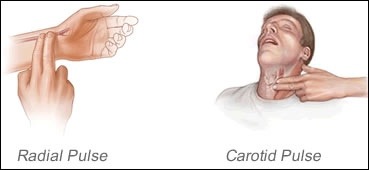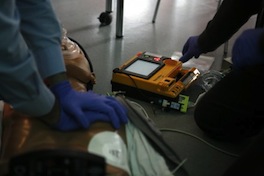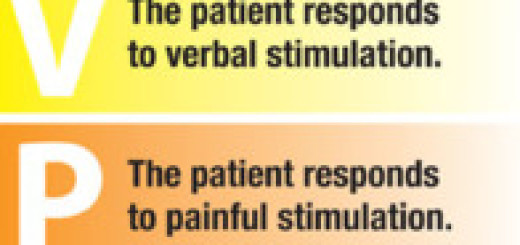How to take a pulse in first aid
Taking a pulse is an important first aid skill which first aiders should feed confident in doing. There are several reasons why taking a pulse is important and several techniques which you can use.
What is a pulse?
When you heart beats (contracts) it produces a pressure wave. This pressure wave can be detected and counted in order to provide information on the heart rate which is measured in beats per minute.
To feel (palpate) a pulse it is normally necessary to compress an artery against a bone. This is why a pulse can normally only be felt at specific locations on the body.
Why should I take a pulse?
A pulse can provide important information about the condition of a casualty. Various medical conditions and illnesses can speed up or slow down a persons’s heart rate.
How do I take a pulse?
There are three main places where you can take a pulse:
1) The radial artery in the wrist
2) The brachial artery in the elbow crease
3) The carotid artery in the neck
To take a pulse you should use two fingers to compress the artery. It make take some practice before you are able to find pulses quickly and accurately.
After you’ve found the pulse you need to count in order to determine the heart rate in beats per minute. You can either count for a full minute (this is the most accurate method) or count for 30 seconds and multiply by 2.
As well as the number you should also feel for the pulse rhythm – is it regular or irregular?
The best way to learn how to take a pulse is to practice practice practice! Find your own pulse first, then start practicing on other people (with their permission of course!)







Thanks you very much for sharing this very important information.
Thanks for providing this wealth of information in a concise manner! I was only aware of the wrist and neck regions before for checking a pulse, but never for the elbow crease! This article definitely helped me learn something completely new!
Great post, I’d like to add a few things:
1. Another option is the femoral pulse. This can be used if there is trauma to any of the previously mentioned areas.
2. In general, you can estimate with reasonable accuracy, the minimum systolic blood pressure of a patient with a palpable pulse. If they have a carotid, femoral and radial pulse, SBP > 70mmHg. If carotid and femoral pulses are present, SBP > 50mmHg. If only carotid pulse is present, SBP > 40mmHg. This makes sense as the carotid pulse is the closest to the heart out of all three pulses, and during times of cardiogenic shock (or any other type of shock for that reason), there will be peripheral vasoconstriction which will diminish radial pulses. The evolutionary reason for this is because the body will try to preserve blood flow to the brain rather than the extremities.
3. In an unstable patient, such as the patient who is experiencing an abnormal heart rhythm (afib, etc), their pulse may vary rapidly. Measuring pulse via the 2x30sec method may not give an accurate reading. Any emergency physician will tell you to measure for the full 60 seconds, and longer, if you are not just trying to measure a pulse but rather to make sure they still have a pulse!
4. A pulse can have many qualities – rate, rhythm, volume, force, etc. In a healthy person in no acute distress, their pulse may be described as “regular, strong and bounding”. In contrast, a person in distress or in shock may have a “weak and thready pulse”. Don’t be alarmed though – some patients with peripheral vascular disease may have a weak and thready pulse but not be in shock.
It always amazes me how they do it wrong in the movies. Learning the right spots – the exact spots – is really important.
I agree with the post above – there are many ways to check for a pulse. Sometimes you have to take alternative routes to see if they have a heartbeat.
Thank you for sharing this information. I have always had an easy time finding carotid pulse, but radial is a little more tricky.
Personally I think taking the pulse from the neck is the easiest. I’m not sure if it’s just me, but I’ve always had trouble trying to find the pulse in the wrist. Thank you for this guide, this will probably come in handy when the only way I can take pule is from the wrist.
Finding the wrist pulse is often difficult, especially if the casualty is a bit overweight. Personally I’ve always preferred the carotid over the radial. A tip I was told many years ago for the radial pulse was to rest the wrist on yopur thumb and then use the first three fingers, pressing lightly with the index and third finger, then the pulse is more easily felt with the second finger. Practice is the key. Did my first first aid course over 50 years ago, but not done one in 10 years.
It’s difficult to find the pulse in the elbow area. Wrist and neck are much easier.
I have it now!
I find the radial pulse easy, but the carotid is getting easier.